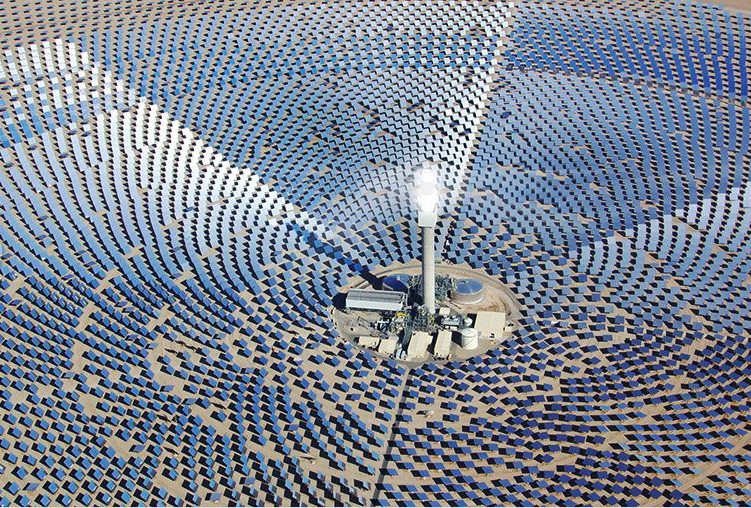Scientists Envision Replacing Batteries with a Molten Silicon 'Sun in a Box'

One of the biggest practical problems keeping renewable energy from overtaking fossil fuels is the question of how to store it. When the sun is shining, or when the wind is blowing extra hard, the energy system siphons off some energy into a battery to use during cloudy days without a breeze and how much it can save is directly related to how good our batteries are. Making better energy storage systems is a priority for many scientists, including those in MIT's Department of Mechanical Engineering, who have developed a concept for what they call a "sun in a box."
The system would direct excess energy to tanks of white-hot molten silicon. That white-hot part is important, because the design would take the light from the glowing metal and convert that back into electricity. The scientists estimate this would cost around half as much as the current cheapest form of renewable energy ready to scale out to an entire grid, pumped hydroelectric storage.
“Even if we wanted to run the grid on renewables right now we couldn’t, because you’d need fossil-fueled turbines to make up for the fact that the renewable supply cannot be dispatched on demand,” says Asegun Henry, an associate professor in the Department of Mechanical Engineering, in a press statement. “We’re developing a new technology that, if successful, would solve this most important and critical problem in energy and climate change, namely, the storage problem.”
The sun in a box works through what's called "concentrated solar power." It's technology that exists today, by storing molten salt in atmospheric tanks. That molten salt operates much like MIT's hypothetical system does-the salt is heated at 1,050 degrees Fahrenheit (566⁰C), generating steam that can be converted into energy.

The difference is cost. Henry's team claims that its silicon system would operate at less cost, creating more opportunity. While companies like SolarReserve claim that its molten salt is "cost-competitive with any new build coal, natural gas, or nuclear technology," Henry's team sees the chance to drive prices even lower.
“This technology has been around for a while, but the thinking has been that its cost will never get low enough to compete with natural gas,” he says. “So there was a push to operate at much higher temperatures, so you could use a more efficient heat engine and get the cost down.”
Looking for alternatives to salt, Henry's team eventually turned to silicon. Behind oxygen, silicon is the most abundant element on Earth, comprising 25.7 percent of the Earth's crust by weight. It's also got the ability to withstand temperatures of over 4,000 degrees F.
They're not the first green energy researchers to look at melting the element. Companies like 1414 Degrees have named themselves after silicon's melting point and other researchers have seen the benefits as well. But while projects aim to create a thermal storage system using the heat the silicon would give off, MIT's project uses a solar panel called a multi-junction photovoltaic to capture the light.
After deciding on silicon, the team had to work on building a tank to hold something that hot for extended periods. There was an initial suggestion of graphite, which is very strong but also worried the team-at those temperatures wouldn't it react with the silicon to form silicon carbide, a well-known abrasive, which would corrode the tank?
During testing, with liquid silicon stored at 3,600 degrees F for around an hour, the silicon did transform into silicon carbide. But rather than corroding the tank, it protected it. The carbide formed a thin layer around the tank, creating a sort of protective skin.
"It sticks to the graphite and forms a protective layer, preventing further reaction,” Henry says. “So you can build this tank out of graphite and it won’t get corroded by the silicon.”
The system would be geographically unlimited, Henry says, meaning that the energy could be stored even in places where the sun isn't particularly shiny. Geographically unlimited energy sources are becoming more viable as sources of energy, as the recent announcement of gravity wells in India confirms.
“This is geographically unlimited, and is cheaper than pumped hydro, which is very exciting,” Henry says. “In theory, this is the linchpin to enabling renewable energy to power the entire grid.”
Source: MIT
('You Might Also Like',)

